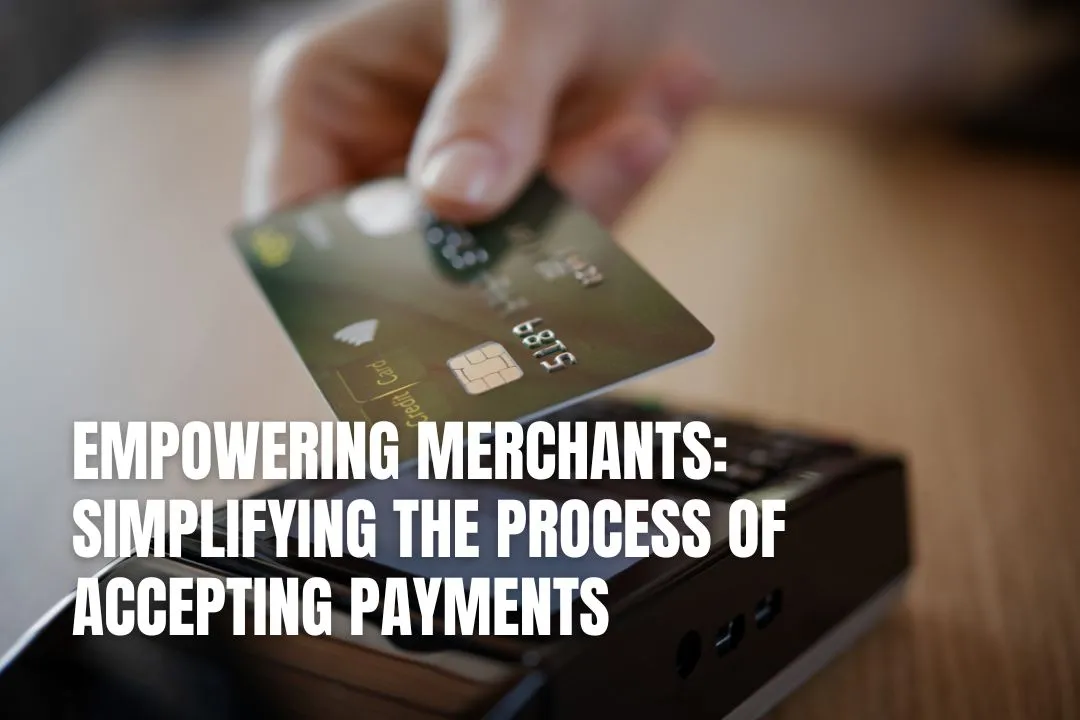
Merchants demand agility and security. Digital transactions have become the norm, and businesses must adapt to consumer expectations for seamless purchasing experiences. The rise of e-commerce and mobile payments has led to an increasing emphasis on reliable payment solutions. A better understanding of how to effectively manage these systems for merchants aiming to succeed in the competition.

Merchants today must be educated about the various payment options available to them. This encompasses everything from credit and debit cards to mobile wallets, online payment platforms, and even contactless payments. Most customers prefer to make purchases using their credit or debit cards or through mobile payment services like Apple Pay and Google Wallet.
The more payment methods accepted, the broader the potential customer base. With the increase in online shopping, payment processes that are cumbersome can drive customers away. Merchants should focus on integrating diverse payment options that cater to their audience's preferences. Each payment method holds distinct advantages and can be strategically utilised to improve transactions.
Scalability is necessary for merchants looking to future-proof their payment processes. As a business grows, its payment requirements will grow, too. The growth that comes with it necessitates flexible payment solutions that can adapt seamlessly to increased transaction volumes and varied consumer behaviour without compromising efficiency or security.
Partner with technology providers that offer solutions designed for scalability. Thanks to partners like Xplor Pay an embedded payments platform, merchants can remain agile and capable of handling the demands of growth. Businesses can include additional payment methods, adapt to new regulations, and implement advanced security measures with no need to transition to entirely new systems.
Planning for scalability includes assessing transaction capabilities, integrating new features and technologies as they become available, and enabling quick adaptations to both market trends and customer preferences. Forward-thinking merchants will invest in scalable solutions and prepare them for the future while supporting their existing customer base.
With the increased reliance on digital transactions comes heightened concerns regarding security. Data breaches and cyber fraud present real threats to both merchants and consumers. Businesses must prioritise the protection of sensitive customer information. Employing encryption and tokenisation can lower the risk of data theft during transactions.
Implementing strong identity verification processes adds an extra layer of security. Multi-factor authentication will guarantee that only authorised users can process transactions. Adopting these strategies safeguards customer data and builds trust in your brand. Merchants who neglect security measures put themselves at risk of financial loss, along with damage to their reputation.
Consistently updating security protocols demonstrates to customers that their data safety is a priority. As concerns grow around privacy, merchants who take a proactive approach tend to retain customer loyalty.
Selecting an appropriate payment gateway can ease transactions. Some factors to take into account include compatibility, fees, and the variety of payment methods supported. A flexible payment gateway allows integration with existing systems and reduces operational disruptions. Merchants should pay attention to transaction fees and processing costs since they directly affect profit margins.
Some companies offer flat-rate pricing, whereas others may charge a percentage per transaction. Evaluate expected sales volumes against processing costs to make informed decisions. Merchants should look for user-friendly interfaces and robust capabilities. Simplifying the payment experience for customers can reduce cart abandonment rates.
Customers prefer to pay through their mobile devices due to the convenience and speed these methods offer. Payment solutions like Apple Pay, Google Wallet, and various mobile banking apps are dominating the market. Merchants who ignore this trend risk alienating a large segment of their customer base.
Integrating mobile payments can boost customer satisfaction and sales. Merchants need to assess the technical requirements for implementing mobile payment systems. Identifying compatible point-of-sale systems and checking if software updates are current can simplify the integration process. By adopting these practices, merchants can create a holistic payment approach that reflects modern consumer behaviour.
Data analytics understand consumer behaviour and payment trends. When merchants use tools that analyse payment data, they can gain invaluable insights into purchase patterns, customer preferences, and transaction performance. Analytics can help identify peak purchasing times, enabling appropriate staffing and resource allocation.
Understand when and how customers prefer to shop to tailor their offerings accordingly. These tailored experiences can lead to improved customer retention and increased sales. Analysing transaction failures or failed payments lets businesses take corrective action prior to these problems affecting customer experiences. Investing in analytics capabilities can have long-term benefits that every successful merchant should take advantage of.
Merchants should get a better knowledge of regulations when setting up payment acceptance processes. They must comply with financial regulations regarding data protection, consumer rights, and payment security, varying by region. Familiarising themselves with the Payment Card Industry Data Security Standard (PCI DSS) or the General Data Protection Regulation (GDPR) to avoid penalties.
Non-compliance can cause loss of customer trust and substantial financial repercussions. To mitigate these risks, businesses should stay updated with regulatory changes and engage legal professionals or compliance experts. Many payment processors offer resources and support to guide merchants through compliance requirements and ease the process.
As technology continues to drive innovations, merchants need to stay informed about emerging trends. One such trend is the growing prevalence of artificial intelligence in payment systems. The use of AI can improve fraud detection, allow for personalised marketing, and improve customer service interactions.
Blockchain technology holds promise, impacting payment security and transparency. Its decentralisation offers potential for reducing transaction fees and higher speed. Merchants who choose to adopt these technologies will embrace the future of payment processing.
Another notable trend is the rise of subscription-based payment models. Many customers now prefer paying on a recurring basis for services rather than a lump sum. Merchants must remain flexible and open to adaptation. By staying ahead of trends through strategic developments and innovations, businesses empower themselves to prosper.

Speed, convenience, and security define customer expectations, and merchants must embrace payment solutions that align with their needs. Merchants who invest in adaptable, secure, and future-ready payment systems will streamline their operations and strengthen their competitive edge.
Providing a variety of payment methods, such as credit cards, debit cards, and mobile wallets like Apple Pay, caters to a wider range of customer preferences. This convenience can significantly reduce the chances of a customer abandoning their purchase, ultimately boosting your sales and customer satisfaction.
A scalable solution should be able to grow with your business. Look for a system that can handle an increasing volume of transactions without a drop in performance. It should also be flexible enough to integrate new payment methods and technologies as they become available, future-proofing your operations.
To protect customer data, you should implement several layers of security. Use encryption and tokenisation to secure data during transactions. Additionally, adding multi-factor authentication provides an extra check to verify that only authorised users are making purchases, which helps build trust in your brand.
When selecting a payment gateway, consider three main factors: compatibility with your current e-commerce platform or POS system, the transaction fees and overall cost structure, and the variety of payment methods it supports. A good choice makes the process smoother for both you and your customers.
By analysing your payment data, you can uncover valuable insights into your customers' behaviour. This includes identifying peak shopping times, popular products, and preferred payment methods. You can use this information to tailor your marketing efforts, manage inventory, and improve the overall customer experience.